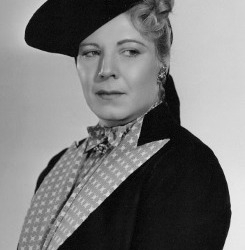#connie gilchrist
Photo

-He just blew his horn again.
- It ain't Gabriel. Relax.
Connie Gilchrist and Linda Darnell in A Letter to Three Wives (1949)
#connie gilchrist#linda darnell#a letter to three wives#1949#**myedits:gif**#**conniegilchrist#**lindadarnell#**alettertothreewives#1940s
56 notes
·
View notes
Photo
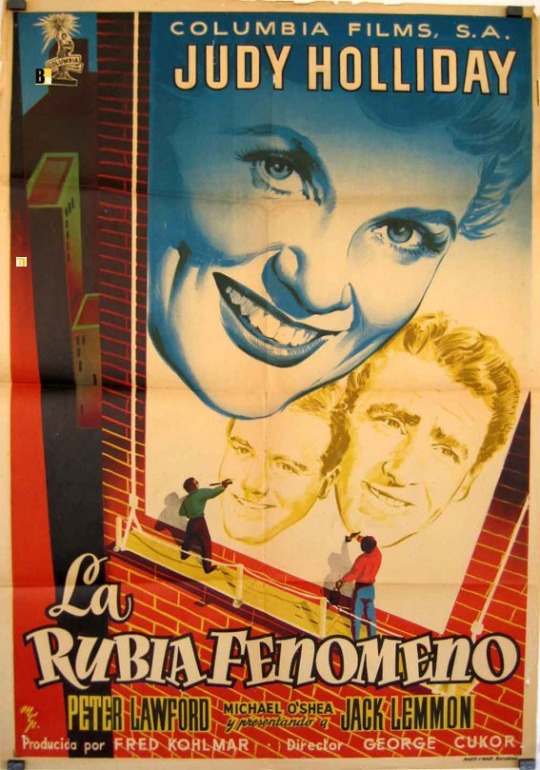
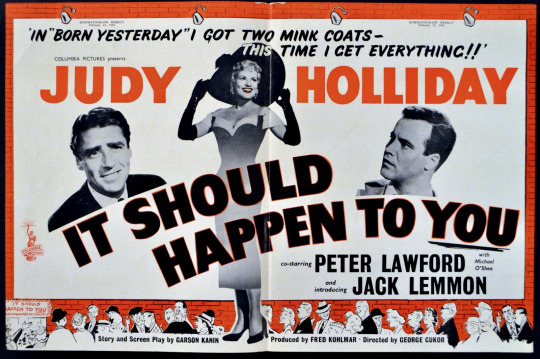
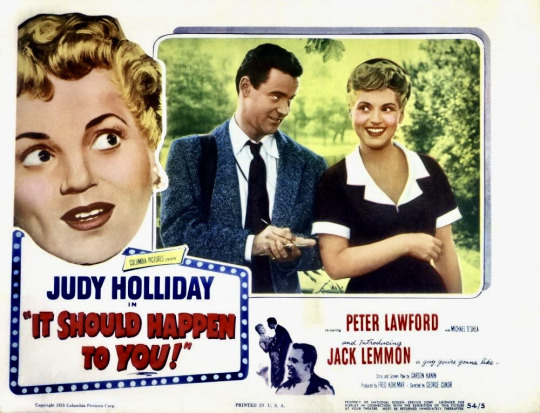

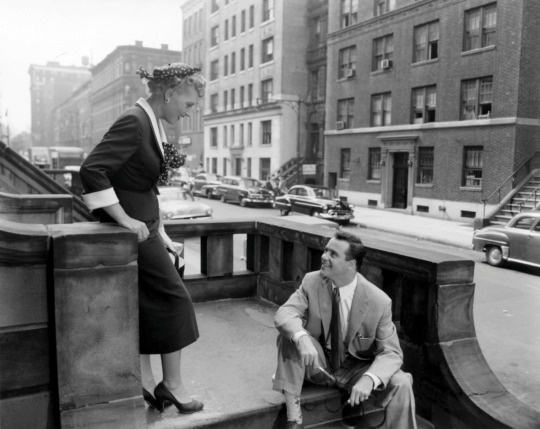
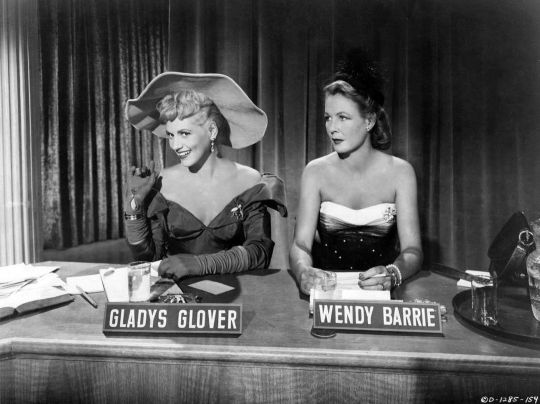


It Should Happen to You (1954) George Cukor
January 25th 2023
#it should happen to you#1954#george cukor#judy holliday#jack lemmon#peter lawford#michael o'shea#vaughn taylor#connie gilchrist#constance bennett#a name for herself
26 notes
·
View notes
Text
"LITTLE WOMEN" (1949) Review
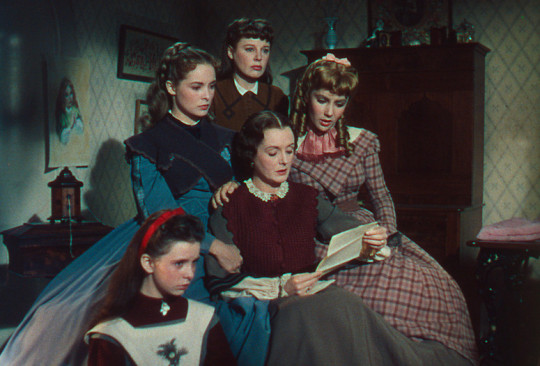
"LITTLE WOMEN" (1949) Review
Louisa May Alcott's 1868 novel is a bit of a conundrum for me. I have never been a fan of the novel. I have read it once, but it failed to maintain my interest. Worse, I have never had the urge to read it again. The problem is that it is that sentimental family dramas - at least in print - has never been appealing to me. And this is why I find it perplexing that I have never had any problems watching any of the film or television adaptations of her novel.
One of those adaptations proved to be Metro-Goldwyn-Mayer's 1949 adaptation, which was produced and directed by Mervyn LeRoy. It is hard to believe that the same man who had directed such hard-biting films like "LITTLE CAESAR", "I AM A FUGITIVE FROM A CHAIN GANG" and "THEY WON'T FORGET", was the artistic force behind this sentimental comedy-drama. Or perhaps MGM studio boss, Louis B. Meyer, was the real force. The studio boss preferred sentimental dramas, comedies and musicals. Due to this preference, he was always in constant conflict with the new production chief, Dore Schary, who preferred more realistic and hard-biting movies. Then you had David O. Selznick, who wanted to remake his 1933 adaptation of Alcott's novel. One can assume (or not) that in the end, Meyer had his way.
"LITTLE WOMEN", as many know, told the experiences of the four March sisters of Concord, Massachusetts during and after the U.S. Civil War. The second daughter, Josephine (Jo) March, is the main character and the story focuses on her relationships with her three other sisters, the elders in her family - namely her mother Mrs. March ("Marmee") and Aunt March, and the family's next-door neighbor, Mr. Laurence. For Jo, the story becomes a "coming-of-age" story, due to her relationships with Mr. Laurence's good-looking grandson, Theodore ("Laurie") and a German immigrant she meets in New York City after the war, the equally good-looking and much older Professor Bhaer. Jo and her sisters deal with the anxiety of their father fighting in the Civil War, genteel poverty, scarlet fever, and the scary prospect of oldest sister Meg falling in love with Laurie's tutor.
Despite my disinterest in Alcott's novel, I have always liked the screen adaptations I have seen so far - including this film. Due to the casting of Margaret O'Brien as the mild-mannered Beth, her character became the youngest sister, instead of Amy. Screenwriters Sally Benson, Victor Heerman, Sarah Y. Mason and Andrew Solt made other changes and they left out some of Alcott's memorable plot points from the novel's narrative. But these changes, however regretful a few of them were (namely Jo and Amy's conflict over the former's manuscript) did not have any real impact on Alcott's original story. Ironically, both Victor Heerman and Sarah Y. Mason wrote the screenplay for Selznick's 1933 film. This should not be surprising, considering that this adaptation bears a strong similarity to the earlier version. I thought Mervyn LeRoy's direction injected a good deal of energy into a tale that could have easily bored me senseless. In fact, MGM probably should have thank its lucky stars that LeRoy had served as producer and director.
As much as I admired LeRoy's direction of this film, I must admit there was a point in the story - especially in the third act - in which the pacing threatened to drag a bit. My only other problem with "LITTLE WOMEN" is that I never really got the impression that this film was set during the 1860s, despite its emphasis on costumes and the fact that the March patriarch was fighting the Civil War. Some might say that since "LITTLE WOMEN" was set in the North - New England, as a matter of fact - it is only natural that the movie struggled with its 1860s setting. But I have seen other Civil War era films set in the North - including the 1994 version of "LITTLE WOMEN" - that managed to project a strong emphasis of that period. And the production values for this adaptation of Alcott's novel seemed more like a generic 19th century period drama, instead of a movie set during a particular decade. It is ironic that I would make such a complaint, considering that the set decoration team led by Cedric Gibbons won Academy Awards for Best Art Direction.
I certainly had no problems with the cast selected for this movie. Jo March seemed a far cry from the roles for which June Allyson was known - you know, the usual "sweet, girl-next-door" type. I will admit that at the age of 31 or 32, Allyson was probably too young for the role of Jo March. But she did such a phenomenon job in recapturing Jo's extroverted nature and insecurities that I found the issue of her age irrelevant. Peter Lawford, who was her co-star in the 1947 musical, "GOOD NEWS", gave a very charming, yet complex performance as Jo's next door neighbor and friend, Theodore "Laurie" Laurence. Beneath the sweet charm, Lawford did an excellent job in revealing Laurie's initial loneliness and infatuation of Jo. Margaret O'Brien gave one of her best on-screen performance as the March family's sickly sibling, Beth. Although the literary Beth was the third of four sisters, she is portrayed as the youngest, due to O'Brien's casting. And I feel that Le Roy and MGM made a wise choice, for O'Brien not only gave one of her best performances, I believe that she gave the best performance in the movie, overall.
Janet Leigh, who was a decade younger than Allyson, portrayed the oldest March sister, Meg. Yet, her performance made it easy for me to regard her character as older and more emotionally mature than Allyson's Jo. I thought she gave a well done, yet delicate performance as the one sister who seemed to bear the strongest resemblance to the sisters' mother. Elizabeth Taylor was very entertaining as the extroverted, yet shallow Amy. Actually, I have to commend Taylor for maintaining a balancing act between Amy's shallow personality and ability to be kind. The movie also featured solid performances from supporting cast members like Mary Astor (who portrayed the warm, yet steely Mrs. March), the very charming Rossano Brazzi, Richard Stapley, Lucile Watson, Leon Ames, Harry Davenport, and the always dependable C. Aubrey Smith, who died not long after the film's production.
Overall, "LITTLE WOMEN" is a charming, yet colorful adaptation of Louisa May Alcott's novel. I thought Mervyn LeRoy did an excellent job in infusing energy into a movie that could have easily sink to sheer boredom for me. And he was enabled by a first-rate cast led by June Allyson and Peter Lawford. Overall, "LITTLE WOMEN" managed to rise above my usual apathy toward Alcott's novel.
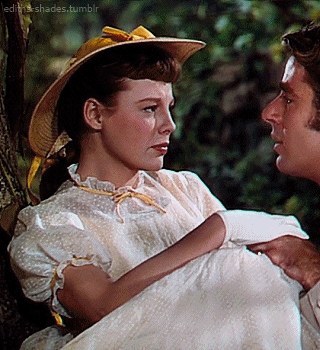
#little women#louisa may alcott#little women 1949#june allyson#janet leigh#elizabeth taylor#margaret o'brien#mary astor#peter lawford#leon ames#rossano brazzi#lucile watson#c. aubrey smith#elizabeth patterson#mervyn leroy#harry davenport#richard stapley#connie gilchrist#ellen corby#andrew solt#sarah y. mason#victor heerman#old hollywood#period drama#period dramas#costume drama
4 notes
·
View notes
Text
3 marzo … ricordiamo …
3 marzo … ricordiamo …
#semprevivineiricordi #nomidaricordare #personaggiimportanti #perfettamentechic
2023: Tom Sizemore, Thomas Edward Sizemore, attore, produttore cinematografico e cantante statunitense. Durante le riprese del film Assassini nati – Natural Born Killers nel 1994 l’attore si è rotto inavvertitamente il naso in una scena d’azione. Nel 1996 l’attore si è sposato con l’attrice Maeve Quinlan, ma nel 1999 è arrivato il divorzio; l’attore poi è stato fidanzato con la maitresse…

View On WordPress
#3 marzo#Alfieri Maserati#Alice Pearce#Connie Gilchrist#Danny Kaye#Dante Maggio#David Daniel Kaminsky#David Ogden Stiers#Doris Hill#Emily Fitzroy#Eugenia Castagnola#Frank R. Wilcox#Frank Reppy Wilcox#Frank Wilcox#Horst Buchholz#Horst Werner Buchholz#Liliana Castagnola#Lois Wilson#Lou Costello#Louis Francis Cristillo#Maria Antonieta Portocarrero Thedim#Míriam Colón#Míriam Colón Valle#Nicola Mary Pagett Scott#Nicola Pagett#Percy Marmont#Ricordiamo#Robert Beatty#Rose Constance Gilchrist#Sarah Ferrati
0 notes
Text
A Letter to Three Wives
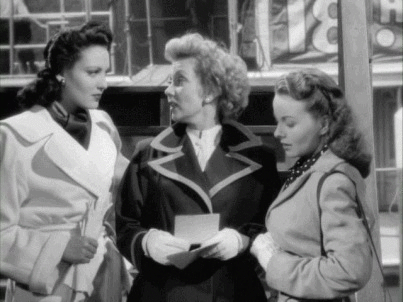
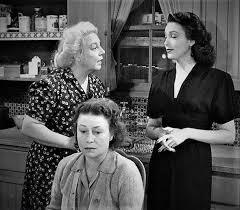
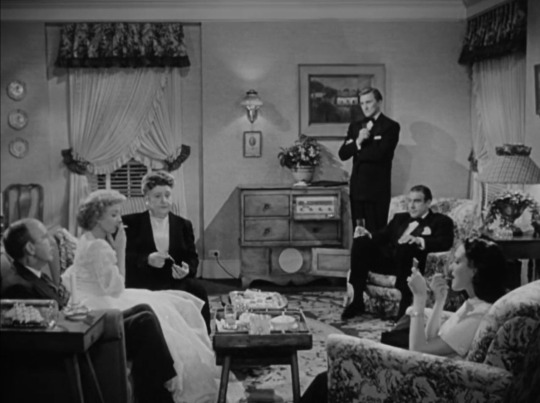
As Jeanne Crain, Linda Darnell and Ann Sothern, the title characters in Joseph L. Mankiewicz’s A LETTER TO THREE WIVES (1949, Criterion Channel), drive off after a charity outing to prepare for the country club’s first dance of the season, an extra sweeps the deck of the boat where they’ve just been exercising their largesse. It’s one of the many comments on class I found in this viewing of one of my favorite Hollywood films. The letter’s sender, Addie Ross (eloquently voiced by Celeste Holm), is the epitome of class, a threat to country bumpkin Crain, upwardly mobile radio writer Sothern and nouveau riche Darnell. Her notification that she’s just run off with one of their husbands inspires a trio of flashbacks in which each woman reflects on the central crisis in her marriage. There’s a good deal of sentiment in the film, but when Darnell, the beauty from the wrong side of the tracks, talks about wanting to be in a silver-framed portrait in her own opulent home, that sentiment feels earned. There’s also a lot of wit in Sothern’s cowtowing to her boss (Florence Bates at her most overbearing, which is her most delightful) and Darnell’s contentious courtship with department store magnate Paul Douglas. Crain’s story is the weakest of the three, but it’s still pretty good, and when she becomes consumed with anger and bitterness near the end, she stops relying on cuteness and delivers a real performance. The rest of the ensemble is peerless, with Kirk Douglas proving he could handle light comedy as Sothern’s husband, Thelma Ritter stealing scenes as her part-time maid and Connie Gilchrist as Darnell’s mother. Bingo!
#joseph l. mankiewicz#comedy#linda darnell#ann sothern#jeanne crain#celeste holm#payul douglas#kirk douglas#florence bates#thelma ritter#connie gilchrist
0 notes
Text
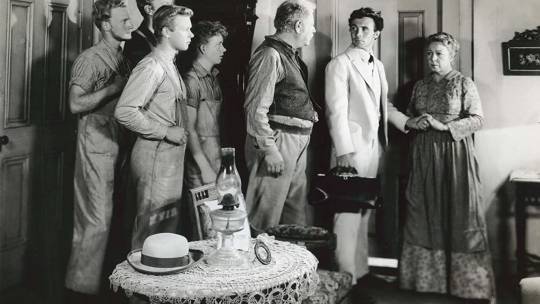
The three on the right are Alan Hale, James Mitchell, and Connie Gilchrist in a scene from Stars in My Crown (1950). Connie was born in Brooklyn and had 123 acting credits from 1940 to 1969. Her entry among my best 1,001 movies is Act of Violence. Her other honorable mentions are The Story of Molly X and Louisa.
Her other notable credits include A Woman's Face, Billy the Kid, A Letter to Three Wives, Little Women, an episode of Leave It To Beaver, Machine Gun Kelly (as Ma), Auntie Mame, Some Came Running, episodes of Alfred Hitchcock Presents, The Twilight Zone, The Alfred Hitchcock Hour, Tickle Me (with Elvis Presley), and two episodes of Perry Mason.
0 notes
Text
Il Circo

Clowns and circus performers backstage, 1915 | Amandus Faure (1874-1931, Germany)
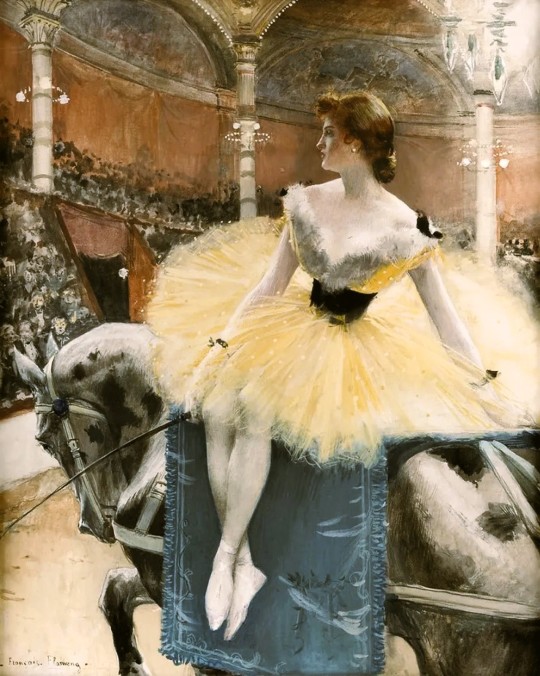
Equestrienne au Cirque Fernando, 1890 ca. | François Flameng (1856-1923, France)
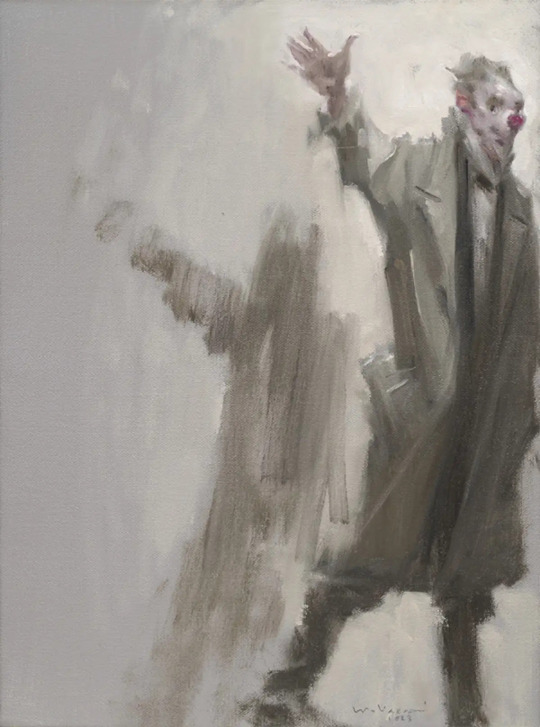
Capriccio, 1923 | Wainer Vaccari (1949, Italia)
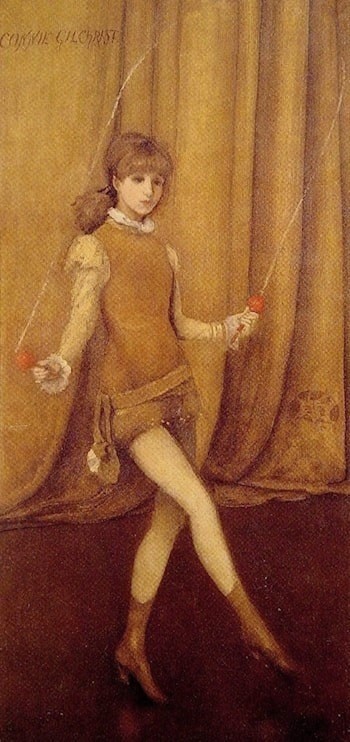
Harmony in yellow and gold - the gold girl Connie Gilchrist, 1872-73 (Met, New York) | James McNeill Whistler (1834-1903, USA)
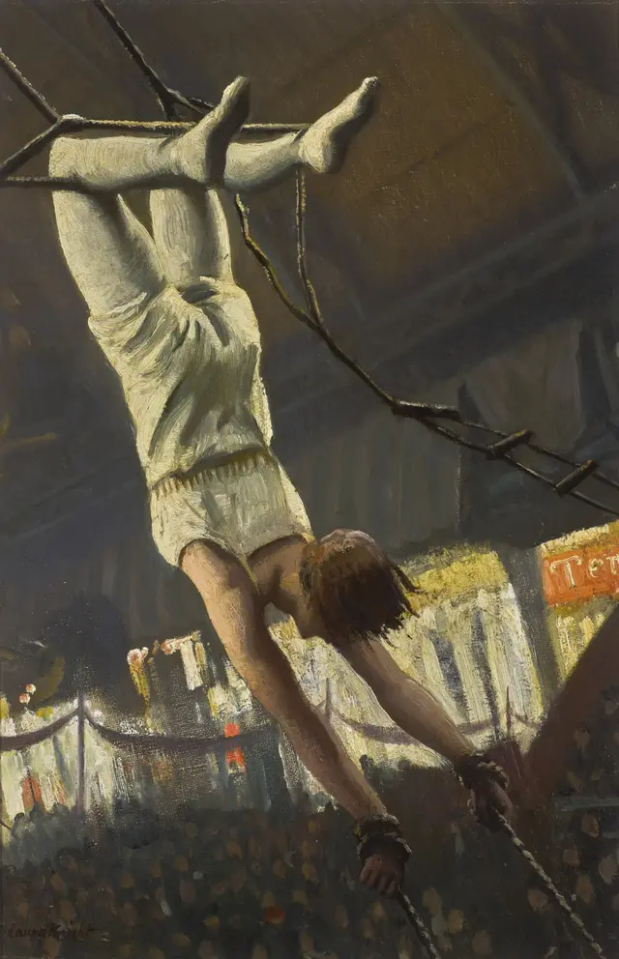
On the trapeze | Laura Knight (1877-1970, England)
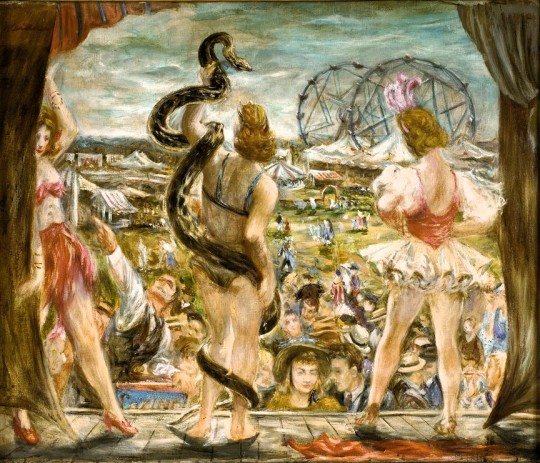
The county fair, 1938 | Roswell T. Weidner (1911-1999, USA)
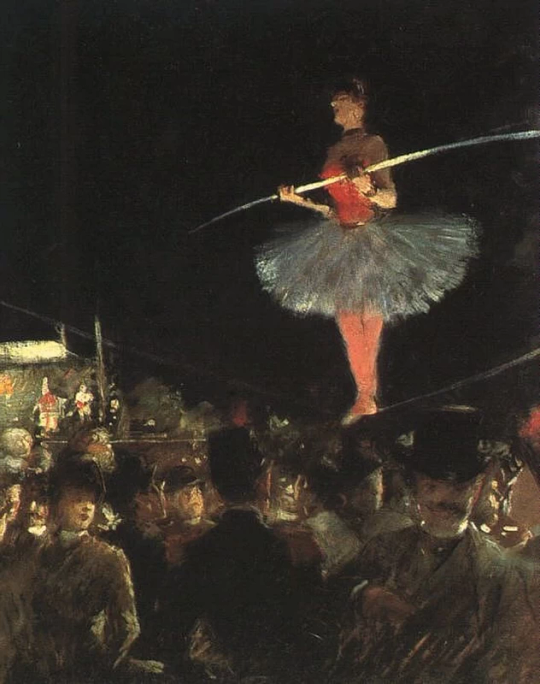
Le funambule | Jean-Louis Forain (1852-1931, France)

Femmes de Paris. Amateurs de cirque, 1883-85 (Museum of Fine Arts, Boston) | James Tissot (1836-1902, France)
2 notes
·
View notes
Text
Explaining one of VTMB paintings (part 14)

The Music Lesson, oil on canvas (1877) by Fredric Leighton
Sir Fredric Leighton, 1st Baron Leighton (Dec 3 1830 - Jan 25 1896) was a British Victorian painter, draughtsman and sculptor born in Scarborough, Yorkshire. He was educated at the University Collage School in London. He designed the tomb for the English Poet Elizabeth Barret Browning in English Cemetery,Florence in 1861. He was the first President of the Commitee commissioning the Suervay of London which was in charge of documenting public works of art and architecture. He was knighted at Windsor in 1878 and made Baronet of Hollow Park Road in the Parish of St. Mary Abbots, Kensington in 1886.
A Victorian painter refers to the distinctive art style of painting in the UK during the reign of Queen Victoria (1837-1901). Specifically the academic art style coming from mainly the Royal Academy of the Arts with Leighton being one of the most recognized of this style. Focused on Christian, British Royalism and Imperial with an overall optimistic tone and close attention to even the smallest of details. The biggest change was the shift away from the traditional focus on storytelling and moralizing subject matter as the subjects of art. Instead choosing subjects based on aesthetic appeal which contrasted their contemporaries Pre-Raphaelites. [1]
The Architecture depicted in the background of The Music Lesson is based on Leighton study of architecture from his trip to Damascus, Syria in 1873. The black and white stripes of the stone building are a style of Islamic architecture ablaq. In Syria Ablaq is often used to decorate arches of Mosques, palaces and Sufi lodges. The technique of ablaq may have originated from Syria or the Byzantine Empire. One of the first written records on the use of ablaq masonry was found regarding repairs done to the northern wall of the Great Mosque of Damascus in 1109 [2]. The musical instrument that is the center of the lesson is a Baglama (sometime called a saz) which is a type of long necked seven string lute used in both Turkish and Azerbaijani folk music [3]. The choice of architecture and instrument are most likely based on their aesthetic beauty and to give the work a small amount of exotic flare. The two British models depicted in the painting appear in a number of Leighton works. The younger girl is Connie Gilchrist( Jan 23 1865-May 6 1946) who as a child was a rather famous art model, actress and singer that work with a number of other artist including Frank Holl, James McNeil Whistler and author/photogrpher Lewlis Carol (author of Alice in Wonderland). As an adult she married Edmond Walter FitzMaurice, the 7th Earl of Orkney (Orkney is a archipelago in the norther isles of Scotland) making her the Countess of Orkney. [4]
[1]“Frederic Leighton.” Wikipedia, Wikimedia Foundation, 1 Oct. 2023, en.m.wikipedia.org/wiki/Frederic_Leighton.
[2]“Ablaq.” Wikipedia, Wikimedia Foundation, 22 Oct. 2023, en.m.wikipedia.org/wiki/Ablaq#:~:text=Ablaq%20(Arabic%3A%20أبلق%3B%20particolored,architecture%20in%20the%20Arab%20world.
[3]“Bağlama.” Wikipedia, Wikimedia Foundation, 15 Oct. 2023, en.m.wikipedia.org/wiki/Ba%C4%9Flama.
[4]“Connie Gilchrist, Countess of Orkney.” Wikipedia, Wikimedia Foundation, 30 July 2023, en.m.wikipedia.org/wiki/Connie_Gilchrist,_Countess_of_Orkney#:~:text=Connie%20Gilchrist%20(23%20January%201865,Lewis%20Carroll%20and%20aristocrats%2C%20Lord.
#Fredric Leighton#victorian painting#Victorian art style#vtmb#Explaining one of VTMB paintings#art history#vampire the masquerade bloodlines#Ablaq#Baglama
2 notes
·
View notes
Text
Without Prejudice Mervelee Myers Name A-Z Of HMCTS CPS CJS Criminals Need ERT Cover LEYF Richard Harty MIC HOC Nursery Violent Nuisance Housing For Women Devonshires Narin Masera Unlawful Injunction Met Police Racist Target Me 30/10/2017-24 Capture YouTube In My House Party Deborah Agnes Gilchrist Hate Crimes I Will Not Whiter Than White To Be Gag Voiceless Vulnerable Victim Of Systemic Discrimination Traumas In My Book Sir Mark Rowley Sign To Strong Jamaican Woman Ms Connie Legister Celebrate DOB With Bob Marley Inspire Me 101
Without Prejudice Mervelee Myers Horoscope Taurus Russell Grant Copyright Push Your Ideas From Behind The Scenes. Quiet Talks Could Lead To Dynamic Results. Being Left To Get On Alone Is A Great Opportunity To Develop Your Own Style. If You’re Asked To A Class, Encourage Your Students To Think For Themselves Monique Wilson CEO Founder Event Specialist Arise Gain Training Institute 87635115588…

View On WordPress
#http://www.actionfraud.police.uk/#http://www.justgiving.com/Mervelee-Myers#http://www.justice.gov.uk/tribunals/employment/claims/responding#https://fght4justiceadvocacy.business.site#https://www.parkinsons.org.uk/#https://www.ryanclement.com#See https://www.facebook.com that think they can brainwash me ON THIS DAY 4 years ago Mervelee Ratty Nembhard is feeling emotional in Lond#United Kingdom. Shared with Public Thanks 1Son http://worldreferee.com/referee/valdin-legister/bio for bringing me back the Memories! Vald
0 notes
Photo

Joan Crawford in A Woman's Face (George Cukor, 1941)
Cast: Joan Crawford, Melvyn Douglas, Conrad Veidt, Osa Massen, Reginald Owen, Albert Bassermann, Marjorie Main, Donald Meek, Connie Gilchrist, Richard Nichols, Henry Kolker, George Zucco, Henry Daniell. Screenplay: Donald Ogden Stewart, Elliot Paul, based on a play by Francis de Croisset. Cinematography: Robert H. Planck. Art direction: Cedric Gibbons. Film editing: Frank Sullivan. Music: Bronislau Kaper.
I don't know why the screenplay for A Woman's Face is credited as an adaptation of the play Il Était une Fois by Francis de Crosset with no mention of the 1938 Swedish film En Kvinnas Ansikte, directed by Gustaf Molander and starring Ingrid Bergman. The 1941 A Woman's Face is clearly a remake of that film, which was released in the United States in 1939. Both films are set in Sweden, when as far as I can tell, de Croisset set his play in France, and both Bergman and Joan Crawford play characters named Anna Holm. Moreover, Crawford had seen Bergman's film and pressured MGM to buy the rights to it for her. As well she should have: Although Louis B. Mayer reportedly objected to Crawford's determination to play a disfigured woman, thinking it would hurt her at the box office just as she was entering her mid-30s, a dangerous time for a female movie star, the film gave Crawford a chance to show her stuff -- to play vulnerable as well as tough. She starts off tough, as a member of a gang of blackmailers, then softens when Torsten Barring begins to woo her, apparently indifferent to her scarred face. But since he's played by Conrad Veidt, we know he's up to no good. Meanwhile, another man, the cosmetic surgeon Dr. Segert (Melvyn Douglas), enters Anna's life -- ironically, since his wife is the target of one of the gang's blackmail schemes. Several implausible plots begin to intersect and everything winds up in court with Anna accused of murder. Flashbacks abound as everything gets sorted out. Meanwhile, Crawford acts up a storm in a role that's a bridge between her younger, scrappy MGM persona and the put-upon middle-aged women of her later career at Warner Bros.
0 notes
Text
Harmony in Yellow and Gold-The Gold Girl
—Connie Gilchrist (ca. 1876–77)
James Abbott McNeill Whistler (American, 1834-1903)

0 notes
Text
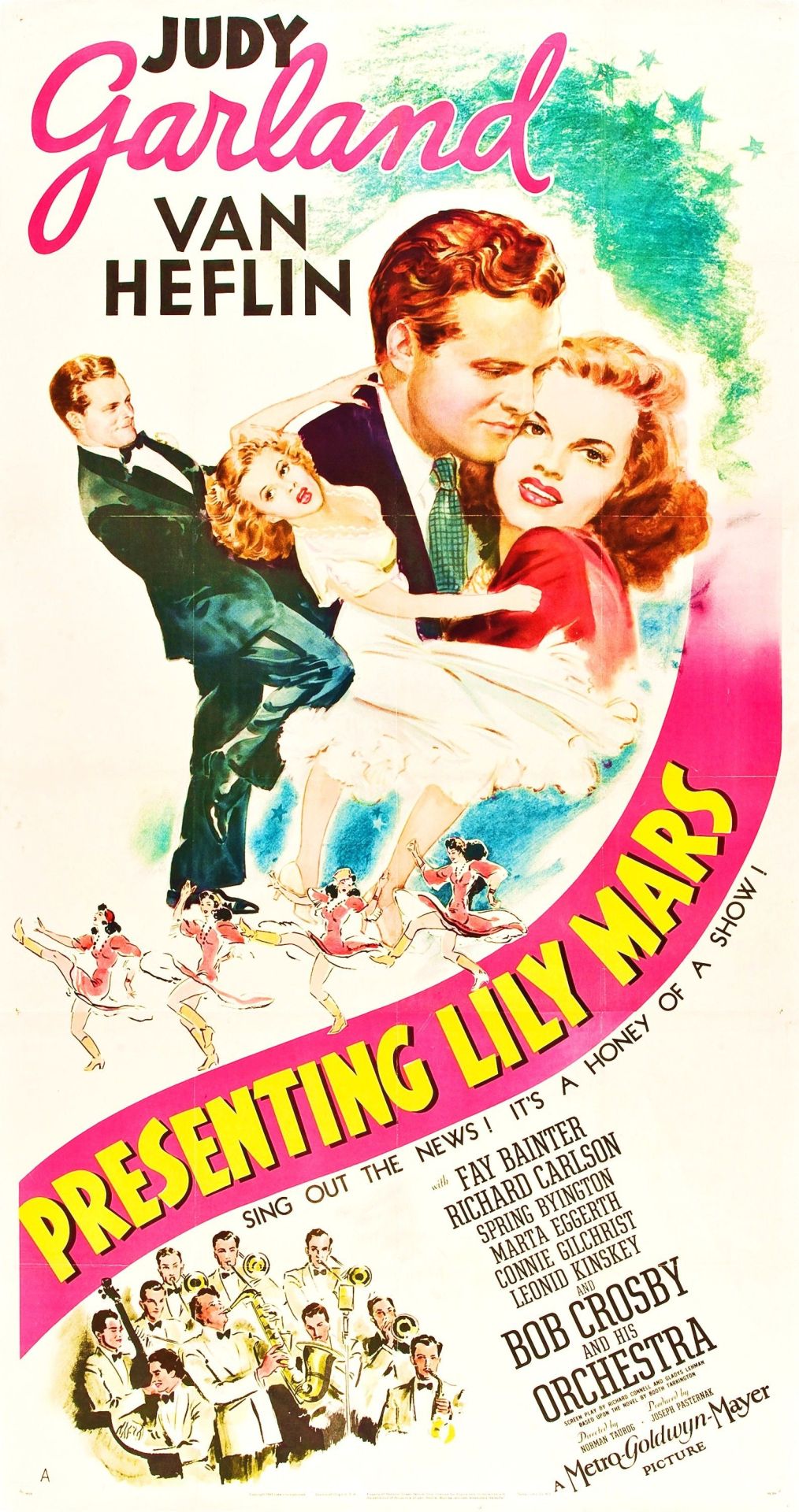
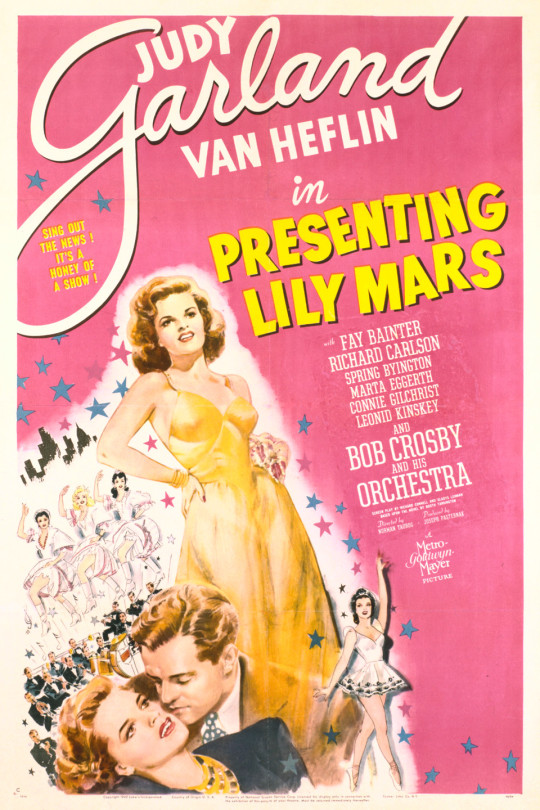
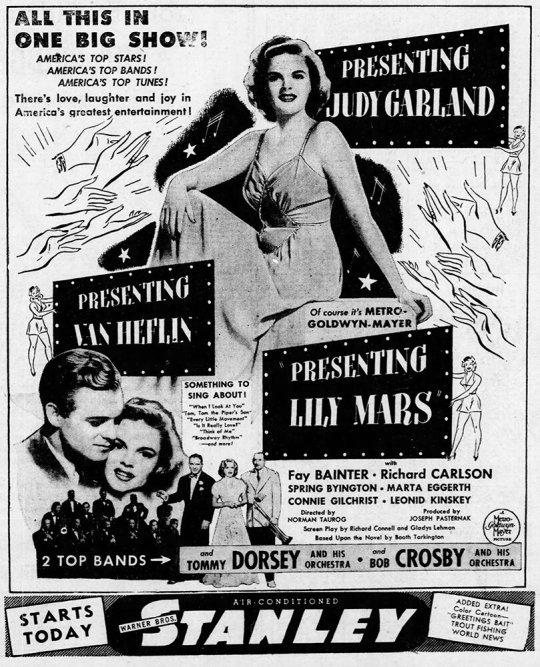
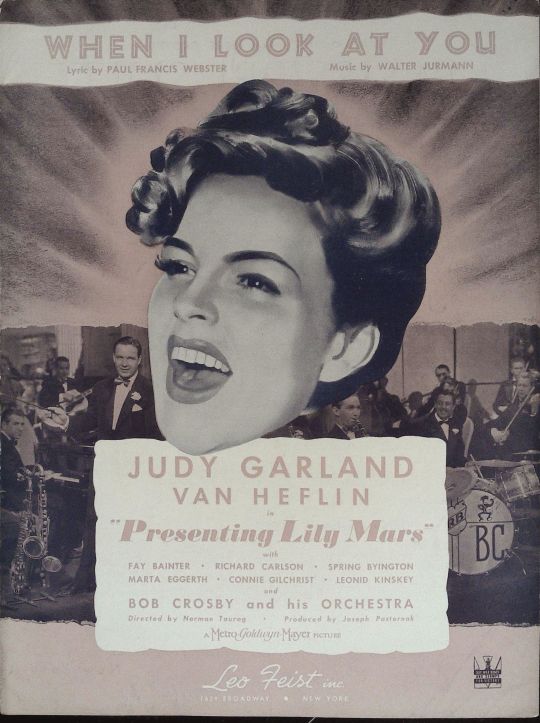
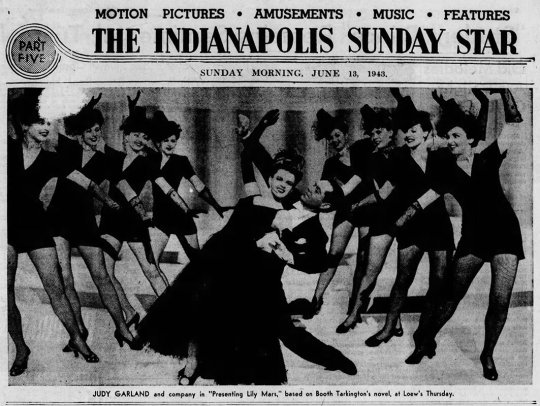
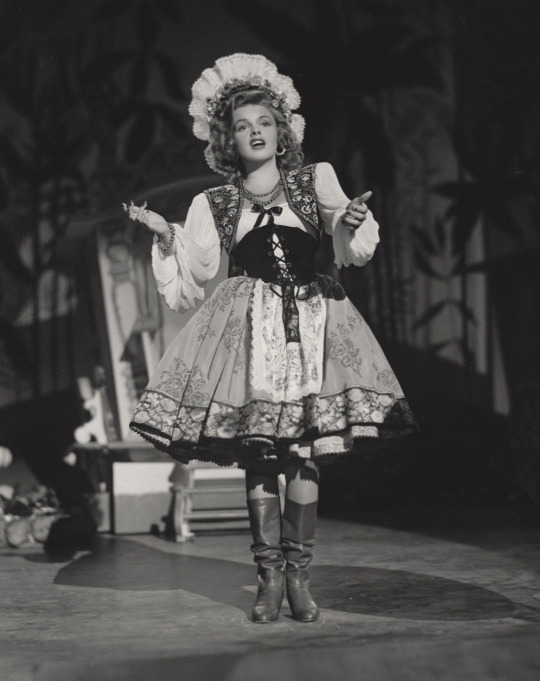



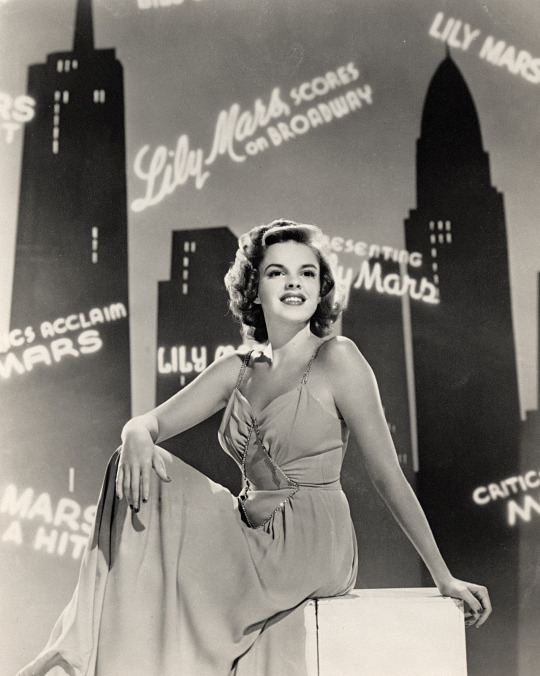
Presenting Lily Mars (1943) Norman Taurog
August 2nd 2023
#presenting lily mars#1943#norman taurog#judy garland#van heflin#spring byington#Mártha Eggerth#richard carlson#fay bainter#connie gilchrist#leonid kinskey#gus schilling
6 notes
·
View notes
Text
Thunder on the Hill

Whenever I see a ‘50s or ‘60s actress posture her way through a role that requires a little more grit than the standard studio-trained contract player could muster, I tend to think how much better Beverly Garland or Carolyn Jones would have been. I felt like a prophet when I read the AFI notes on Douglas Sirk’s THUNDER ON THE HILL (1951, Criterion) and saw Garland had played Ann Blyth’s role in a TV adaptation opposite Phyllis Thaxter. I don’t expect anybody would be upset were I to suggest that Garland probably did a better job, so I’ll drop the other shoe and say that Thaxter likely was more effective than Claudette Colbert. Colbert is a nun running a convent hospital. When a flood strands the police escort for a condemned murderess (Blyth) there, Colbert becomes convinced the woman is innocent and sets out to prove it, despite opposition from the authorities and her mother superior (Gladys Cooper). This is early Sirk, before he found his perfect producer in Ross Hunter, so there’s not enough kitsch to liven things up, and when Colbert and Blyth get all emotional, it gets rather hard to watch. They indicate emotion as if they were acting for the first time. Maybe the film would be more ironic in Technicolor with Jean Louis gowns and nun’s habits. That’s not to diss William Daniels’ cinematography. He and Sirk do great work with light and shadow, and there are even some camera angles that anticipate the director’s later, more delirious framing. And at least when the leading ladies’ emoting gets too much, you can marvel in the more detailed, naturalistic work of Anne Crawford as a doctor’s wife with a secret, Connie Gilchrist as the convent cook, Michael Pate as the village idiot and Norma Varden as Blyth’s female guard (so good, I kept watching her even when she was out of focus). The film plays more as melodrama than murder mystery. Instead of following Colbert as she attempts to figure out whodunnit, we see lots of scenes without her that eventually let us solve the case before she does. There’s also a lot of emphasis on women’s roles, which is another element anticipating Sirk’s later films. The nuns are condemned to lives of servitude, while the doctor’s wife is a virtual prisoner of domesticity. The view of religion also reads false, which may be some Sirkian irony at work. Were a lesser actress than Cooper cast as the mother superior, the religious life might seem totally absurd. As it is, Cooper is so authoritative you may not realize until afterwards what a hypocrite the character is. She fully supports Colbert’s take-charge attitude in running the hospital, but when the sister’s attempts to exonerate Blyth cause trouble with the police, Cooper decides the same attitudes are signs of serious spiritual shortcomings.
3 notes
·
View notes
Text
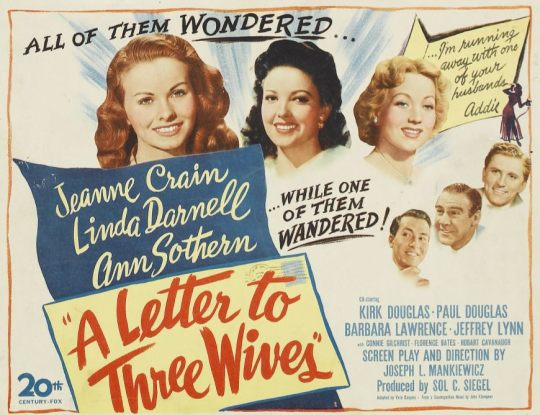
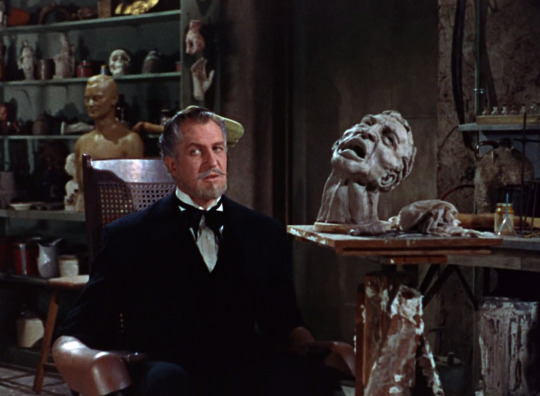
@tcmparty live tweet schedule for the week beginning Monday, January 17, 2022. Look for us on Twitter…watch and tweet along…remember to add #TCMParty to your tweets so everyone can find them :) All times are Eastern.
Sunday, Jan. 23 at 8:00 p.m.
A LETTER TO THREE WIVES (1948)
A small-town seductress notifies her three best friends that she has run off with one of their husbands.
Friday, Jan. 28 at 6:15 p.m.
HOUSE OF WAX (1953)
A scarred sculptor re-populates his ravaged wax museum with human corpses.
#schedule#joseph l. mankiewicz#jeanne crain#linda darnell#ann sothern#paul douglas#kirk douglas#barbara lawrence#jeffrey lynn#connie gilchrist#florence bates#celeste holm#thelma ritter#carl switzer#vera caspary#andre de toth#vincent price#frank lovejoy#phyllis kirk#carolyn jones#paul picerni#roy roberts#angela clarke#paul cavanagh#charles buchinsky#1940s#1950s#drama#horror#3D
19 notes
·
View notes
Photo
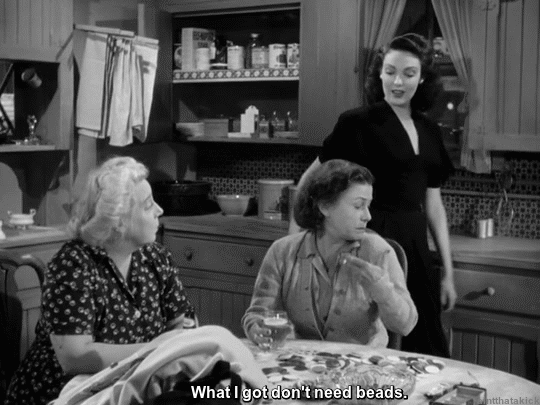
- How do I look?
- If I was you, I'd show more of what I got. Maybe wear something with beads.
#connie gilchrist#linda darnell#thelma ritter#a letter to three wives#1949#**myedits:gif**#**conniegilchrist#**lindadarnell#**thelmaritter#**alettertothreewives#1940s#gif warning
23 notes
·
View notes
